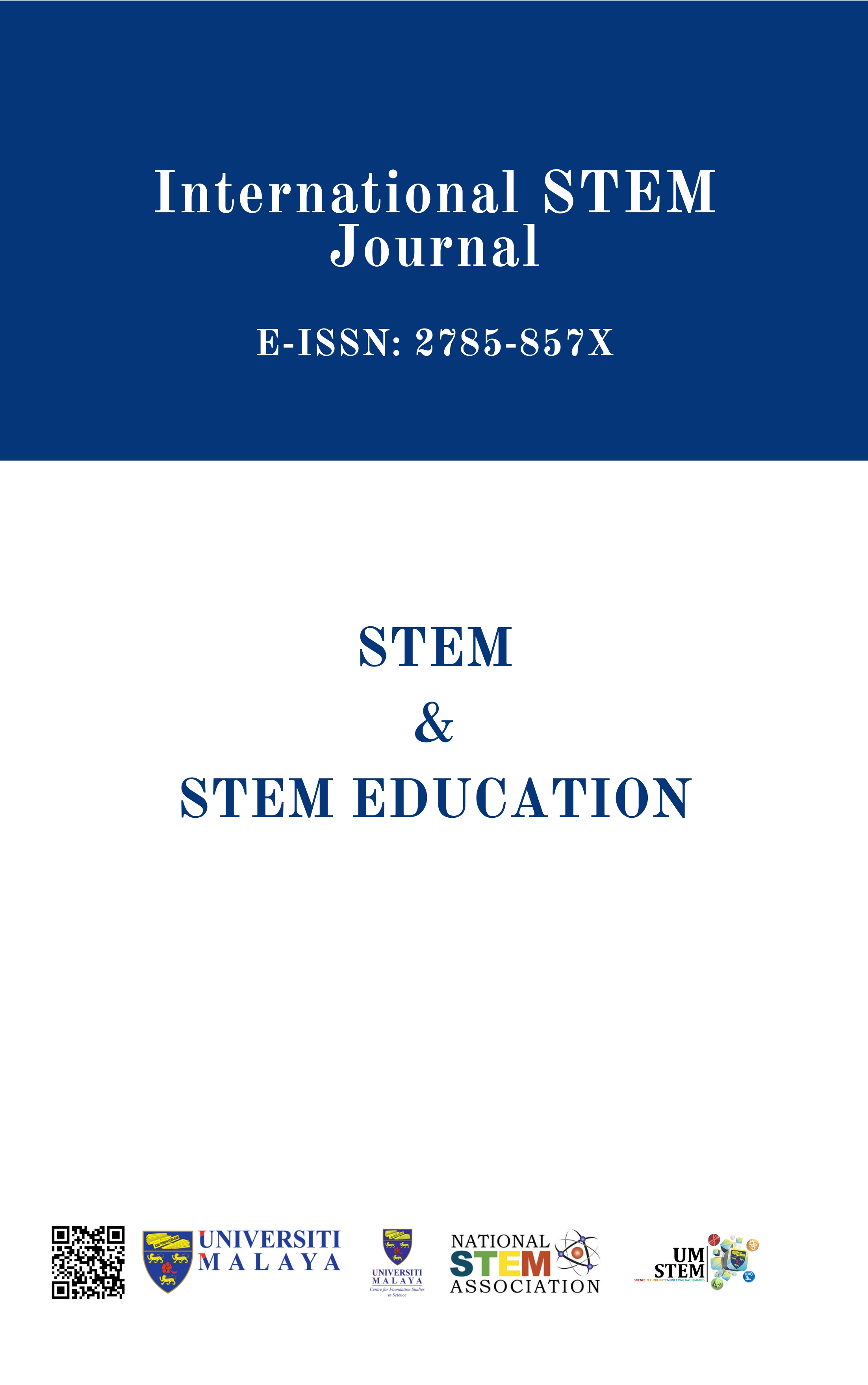NOURISHING STUDENTS’ CREATIVE THINKING THROUGH EXEMPLAR STEM LESSON EMBEDDED DURING EXTRACURRICULAR ACTIVITIES
Keywords:
Creative Thinking, Extracurricular Activity, Exemplar STEM Lesson, Project-Based Learning, 6E Teaching Learning ModellingAbstract
Education, research, and innovation have an impact on economic development in the world today. In a highly competitive economy, the government needs to concentrate on technologies to increase the value of production by concentrating on using innovative thinking to solve the problem. This study aimed to improve the creative thinking of students through extracurricular activities focused on the STEM Learning Based Project on the topic of density. The study used a one-group pre-test,post-test, and post-test delay design.
Quantitative results were used to see the effect of project-based learning as a model STEM lesson that was incorporated into extracurricular activities through 6E Teaching Learning Modeling as an intervention. There were 44 secondary school students in attendance. The tools used included photo analyzes and questionnaires on creative thinking with two subscale curiosity and flexibility, along with photo interpretation.
The data was analyzed using MANOVA. The mean score pre-test score was 2.65 (SD = .25944), then increased to 3.42 (SD = .58987) for post-test 1 and continued to increase to 4.25 (SD = .26615) for post-test 2. In addition, the mean flexibility of scores also indicates progress. The mean pre-test score was 2.6 (SD = .39583), then increased to 3.48 (SD = .53341) for post-test 1 and continued to increased to 4.13 (SD = .27673) for post test 2.
The study found that a STEM teaching-based learning project embedded in extracurricular activities through 6E Teaching Learning Modeling project-based learning that is incorporated into extracurricular activities could enhance students ' creative thinking, curiosity, and flexible thinking.
Keyword: Creative thinking, extracurricular activity, exemplar STEM lesson, project-based learning, 6E Teaching Learning Modelling.
Downloads
References
Banning, W., & Sullivan, G. (2011). Lens on outdoor learning. USA: Redleaf Press.
Chua, K. H., Mageswary, K., & Zain, A. N. (2017). Influences of gender and school location on science environment in Malaysia lower secondary schools. In N. J. Ahmad & M. J. Zakaria (Eds.), Revitalising Science Teaching and Learning Culture Towards Sustainable Living (pp. 1-13). Penang: SEAMEO RECSAM.
Dawes, L., & Wegerif, R. (2004). Thinking and learning with ICT: Raising achievement in primary classrooms. London: Routledge Falmer.
Dugger, W. E. (2010). Evolution of STEM in the United States. Paper presented at the In 6th Biennial International Conference on Technology Education Research in Australia, Australia.
Finke, R. A., Ward, T. B., & Smith, S. M. (1992). Creative Cognition: Theory, research, and application. Cambridge: Cambridge, MA:MIT Press.
Grossnickle, E. M. (2016). Disentangling curiosity: Dimensionality, definitions, and distinctions from interest in educational contexts. Educational Psychology Review, 28.
Hanif, S., Wijaya, A. F. C., & Winarno, N. (2019). Enhancing Students' Creativity through STEM Project-Based Learning. Journal of science Learning., 2(2).
Honey, M., Pearson, G., & Schweingruber, A. (2014). STEM Integration K-12 education: status,prospects and an agenda for research. Washington: National Academic Press.
Kanadli, S. (2019). A Meta-Summary of Qualitative Findings about STEM Education. International Journal of Instruction, 12(1).
Lou, S. J., Tsai, H. Y., & Tseng, K. H. (2011). STEM Online Project Based Collaborative Learning for Female High School Students. Kaoshiung Normal University Journal, 30.
Loveless, A. M. (2002). Literature Review in Creativity. England.
Lubart, T. I., & Sternberg, R. J. (1995). An investment approach to creativity: Theory and data. In S.M.Smith, T.B. Ward, & R.A. Finke (Eds.), The creative cognition approach. Cambridge: MA:MIT Press.
Maw, W. H., & Maw, E. W. (1970). Self-concept of high and low curiosity boys Child Development, 41(1), 1970.
Munandar, U. S. C. (1999). Mengembangkan daya dan kreativiti anak sekolah. Jakarta: Gramedia Widiasarana.
Shafie, L. A., Zahidi, A. M., Abd.Majid, F., & Ab.Rahim, S. (2017). Creativity. In Ab.Majid., M. A. A. Zamin, & M. F. Kamarudin (Eds.), Toolkits for 21st century teaching; Practical Implications for the 4th Industry Development (pp. 11). Kuala Lumpur: UiTM Press.
Shafie, L. A., Zahidi, A. M., Majid, F. A., & Rahim, S. A. (2019). Creativity. In F. A. Majid, A. A. Zamin, & M. F. Kamaruddin (Eds.), Toolkits for 21st Century Teaching: Practical Implications for the 4th Industry Skills Development. Kuala Lumpur: UiTM Press.
Sternberg, R. J. (1996). Successful Intelligence: How practical and creative intellingence determine success in life. New York: Simon & Schunter
Torrance, E. (1963). Education and creative potential. Minneopolis: University of Minnesota Press.
Treffinger, D., Young, G., Selby, E., & Shepardson, C. (2002). Assessing Creativity: A Guide for Educators. Retrieved from US:
Tsai, K. C. (2014). A review of the effectiveness of creative training on adults learners. journal of Social Science Studies, 1(1), 17-30.
Tytler, R., & Aranda, G. (2015). Expert teachers' discursive moves in science classroom interactive talk. International Journal of Science and Mathematics Education, 13(2), 425-446.



